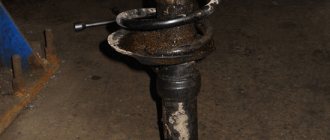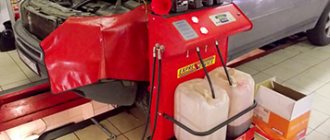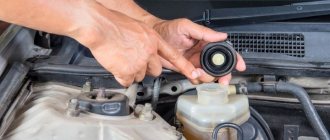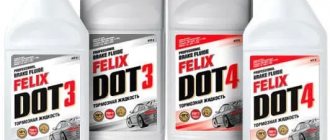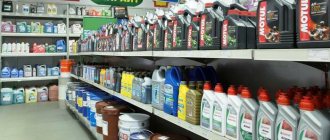Surely, every owner of a car with a gasoline engine, due to various circumstances, had to mix 92 and 95 gasoline at least once. Some people do this out of economy, others believe that in this way it will be possible to achieve ideal fuel quality, while others simply conduct experiments, pouring one or another fuel into the tank. But in order to understand whether it is possible to mix AI-92 and AI-95, it is worth delving into the process of creating various gasolines, and only then drawing conclusions about the possible consequences.
The process of obtaining gasoline from oil
Various types of gasoline are obtained by distilling oil. There are several types of petroleum processing. Distilling oil into gasoline is a series of chemical temperature processes.
Direct distillation of raw materials produces straight-run gasoline. To improve the quality of the resulting gasoline, it is recycled.
The following recycling methods are used:
- catalytic reforming;
- hydrocracking;
- catalytic cracking;
- thermal cracking and some others.
Using direct distillation - rectification - gasoline was produced at the dawn of the automobile industry. Using this method, crude oil is heated, and as its temperature rises, the crude oil is separated into different fractions that differ in boiling point.
Rectification can be carried out both at atmospheric pressure and in vacuum of different depths. The resulting gasoline has low octane levels, not higher than 60 units.
To obtain higher quality fuel suitable for use in modern carburetor and injection internal combustion engines, other methods are used. The most common among them are catalytic and thermal cracking.
The basis of the cracking process is the decomposition of oil components into fractions by heating to high temperatures using catalysts. During the cracking process, complex hydrocarbon compounds are decomposed into simple ones, which have a lower molecular weight.
The advantages of cracking are:
- increased productivity of the process, gasoline yield increases by 40-50%;
- improving the quality of the resulting fuel - detonation resistance can range from 70 to 90 units;
- To obtain a commercial petroleum product from gasoline obtained by cracking, a smaller amount of additives is required.
When producing fuel, additional technologies can be used in production lines to improve the quality of the final product and increase the depth of processing of petroleum feedstock.
What is octane number?
The main characteristic of fuel for gasoline internal combustion engines is the octane number. This value indicates the degree of resistance of the fuel intended for a carburetor engine to spontaneous detonation.
The most common gasolines are compositions with knock resistance equal to 92, 95 and 98 units.
To improve the quality of fuel and increase its resistance to spontaneous detonation, various additives are used.
Such complexes include:
- alkyls;
- esters;
- alcohols;
- additives that increase the resistance of fuel to freezing.
When determining the detonation resistance of fuels, isooctane and n-heptane are used as standards. The detonation resistance of the first compound is taken to be 100 units, and for the second substance it is 0 units. N-heptane is capable of self-detonation under natural conditions.
A mixture of these compounds in different percentages represents the value of resistance to detonation, expressed in units.
To determine the value of detonation resistance, the research and motor method is used.
Gasoline class
The current GOST establishes the following grades of fuel for gasoline internal combustion engines:
- AI-80.
- AI-92.
- AI-95.
- AI-98.
For each brand of fuel there are 4 environmental classes:
- K2 (up to 500 mg of sulfur per 1 kg, and the share of monomethylamine is not more than 1.3%);
- K3 (up to 150 mg/kg and 1% MMA);
- K4 (up to 50 mg/kg and 1% MMA);
- K5 (up to 10 mg/kg and complete absence of MMA).
The value of detonation resistance is not related to the class of environmental cleanliness.
In addition to the indicated environmental safety rating, fuel for gasoline internal combustion engines is divided into classes depending on volatility.
In accordance with GOST, gasoline is divided into the following classes:
- A, B - summer;
- C, D, E, F - winter;
- C1, D1, E1, F1 - off-season.
In total, there are 10 classes of fuel depending on volatility.
Types of additives
A fuel additive is a drug added to fuel to improve its performance.
There are 4 types of gasoline additives:
- dehumidifiers;
- cleaners;
- octane correctors;
- A separate type of additives with combined properties has been developed.
Water neutralizers, or dryers, are designed to remove small amounts of moisture from fuel, which can freeze in winter.
Injector cleaners ensure cleaning of injectors and power unit valves from deposits and carbon deposits without disassembling the engine. This additive works well with low mileage.
Octane correctors provide an increase in the octane number in the fuel, which helps reduce fuel consumption and increase vehicle power.
Such additives may consist of:
- monohydric alcohols;
- esters;
- allotropes of carbon.
One of the most common additives is FuelEXx Gasoline. This mixture, when added to the fuel, allows the combustion chamber to be cleaned of accumulated soot and varnish deposits, which improves the functioning of the power unit.
Another additive used by car owners is CeraTec, manufactured by Liqui Moly. The basis of the product is liquid ceramics. The use of the composition increases engine power, reduces fuel consumption and improves the operating mode of the power unit.
Differences
But first, let's talk in a nutshell about the differences between these two most popular brands offered at gas stations.
After all, many drivers, especially beginners, think that the 95 is of higher quality compared to the 92 and cannot harm the engine. But the opposite is true. Higher gasolines are made on the basis of 92
, by adding all sorts of additives to it that can increase the octane number. Therefore, 92 is cleaner than its counterparts, it turns out (although, according to experts, in the Russian expanses, especially in the outback, it is difficult to find fuel that is not created with the help of additives, even 92). But the same experts claim that due to the low octane, 92 and there are few additives, and it itself is cleaner.
By the way, adding these chemicals and bringing raw materials to rank 95 costs gas stations less than purchasing the same material from oil refineries. That's why so many people are doing body blows. Such a homemade 95 can be extremely dangerous for the engine, since the buyer does not know for certain what has been added to it!
Risks and consequences when mixing gasoline
When refueling a car with 95 fuel, if there is already 92 gasoline, you should remember that the fuel in the tank will practically not mix. This occurs due to the fact that different fuels have different densities.
If you fill the tank with fuel with an octane number of 95 and 92, they will separate and the 95 fuel, being lighter, will collect on the surface of the 92. When the engine is running, first one type of fuel will be produced, and then a second, the benefit will be in improving the quality of the fuel mixture in in this case is doubtful. But if the car’s engine is designed for operation using AI-92, filling the tank with AI-95 will not cause the power unit to fail.
Advice from manufacturers
According to the manufacturers’ instructions, each individual car is “tailored” to a specific type of fuel. That is, if it is indicated on the gas tank cap that you should fill it with 92 gasoline and above, then you must follow this recommendation. In this case, nothing special will happen, and high-octane fuel will not damage the engine. However, most of today's cars “prefer” 95 gasoline, and here the owner’s desire to save money, pouring AI-92, can play a cruel joke on him. High-octane fuel requires a lower combustion temperature. That is, the desire to save money can lead to premature engine wear and vehicle breakdown. The result is very dubious savings, which are unlikely to justify all the risks. A car owner should always remember the consequences and operate the car wisely, carefully weighing all the pros and cons.
What happens if you pour 92 gasoline into an engine designed to use 95?
If the power unit is designed for operation only on AI-95, then filling it with low-octane fuel can have a significant impact on the operation of the internal combustion engine.
A higher octane number implies a lower combustion temperature of the fuel mixture. Changing this parameter when using low-octane fuel affects the technical characteristics of the engine.
When the engine runs on such gasoline, the combustion temperature of the mixture can increase to a level not provided for by the design, which provokes accelerated wear, burnout, or melting of the structural elements of the cylinder-piston group.
The use of low-octane fuel in an engine designed to use 95 octane fuel leads not only to accelerated wear, but also to increased fuel consumption.
Various gas stations and manufacturers
I won’t write now that all major brands buy fuel from several refineries, but this is not entirely true.
The most important thing to understand is that all gasoline is now standardized - not only according to GOST, but also according to the characteristics and standards of “EURO” (EURO5 is now used in Russia).
I admit that different manufacturers may change the formula slightly, but the overall composition should be within certain limits. It’s like milk in stores has 2.5% fat, there are a lot of manufacturers, but the final composition is the same.
SO if you refuel at different gas stations with one type of fuel or at one 92 and at another 95 gasoline. Nothing bad will happen.
Well, friends, as you understand, mixing will not lead to anything terrible! However, you need to understand that if your engine is designed for 95 or 98, you should not pour 92, thereby saving a little, which will ultimately work out sideways.
Didn't find the information you are looking for? on our forum.
Complete replacement of AI-95 with AI-92.
As a rule, the choice of fuel is influenced by its cost; it is for this characteristic that most motorists choose the cheaper 92 instead of the required 95. Of course, the car will run on it, but what consequences can you expect after such a ride?!..
- The engine will increase fuel consumption due to the lower octane number.
- While moving, a metallic sound may appear, which will be triggered by a violation of the temperature regime of fuel combustion: the rate of gasoline combustion will increase, and the speed of spread of the flame itself will increase to 1500-2000 m/s, waves of flame will beat against the walls of the combustion chamber, which will lead to a metallic sound and vibration of engine parts. The latter will cause faster wear of these parts.
- The exhaust gases will turn black (this process is called detonation). And although most modern cars have a knock prevention system, when it works, the power of the car engine is reduced even more.
Is it possible to mix gasoline of different octane numbers?
So many people, so many opinions. Some people say that you should only refuel your car based on the car manufacturer’s recommendations; others recommend that you always mix different brands of gasoline. Experts tried to understand this issue.
How are different fractions of gasoline obtained?
Let's not delve into the jungle of production technology. It is enough to know that in the final cycle the output is fuel with a maximum octane number of up to 80. There are ways to obtain high-octane fuel directly during the industrial distillation of oil at a refinery, but such gasoline will be very expensive due to the complexity of the technology, so its production is unprofitable.
It must also be remembered that not all refineries in the country operate using the new hydrocracking system. There are a number of oil refineries with old technologies that produce gasoline with a maximum octane number of 70. It goes without saying that such fuel requires more additives and the quality of gasoline does not improve in any way.
After obtaining low-octane fuel, additives come into play. Currently, these are mainly alcohol or ether additives. It turns out that the cleanest gasoline at the pumps is 92nd. Because to obtain it you need the least amount of additives. Accordingly, its price is lower. True, there are many conflicting opinions about the quality of this gasoline. But one thing is clear: 92nd gasoline is the most popular and cheapest fuel. As for 98-grade gasoline, the additives used in it differ from those added to 95-grade gasoline. They contain fewer ferrous components and are less harmful to the engine ignition system.
Features of using gasoline of different octane numbers
The question arises, why do most manufacturers of modern cars recommend using either 95 or 98 types of gasoline in their technical regulations? It's all about the design features of the car engine. Gasoline with a higher octane number burns faster at a lower temperature. Now engine sizes are growing, as is their power. Therefore, they require fuel that burns quickly and gives high engine dynamics.
If you use 92nd where 95th or 98th gasoline is recommended, then in the worst case the valve may burn out, and in the best case, fuel consumption will increase and engine power will decrease. The car's throttle response drops quite noticeably, and if additional options like air conditioning are turned on, it barely pulls at all. This situation is extremely unpleasant, especially when overtaking.
Therefore, most experts say: refueling cars with engines where the use of 92 is recommended will not cause harm to the same 95. Troubles can only occur if the octane number of the fuel filled by car owners decreases, despite recommendations for the use of fuel with a higher octane number. But everyone wants to save money, so a significant portion of drivers fill up their tanks by mixing fuel of different fractions.
There are a few more nuances when using the wrong brand of gasoline. Owners of cars with an automatic transmission, especially an old-style four-speed one, have noted that if you use 95 or 98 gasoline instead of 92, the box will die faster. As auto mechanics explain, desynchronization of the drive systems of the gearbox and engine occurs. That is, the gearbox does not keep up with the speed of the engine, and when switching speeds from clutch to clutch, a “blow” effect appears.
Therefore, you need to take more seriously the recommendations that the manufacturer puts in the technical description of the car, in the section on what gasoline it is advisable to use.
If you mix 92 with 95
There are many legends that when mixing gasoline with different octane numbers, supposedly due to the different densities of the liquids, 95 gasoline remains at the top. And the denser fraction of 92 goes down.
But we must understand that in this case it is not physics that is at work, but chemistry. Due to the mutual penetration of liquid molecules of the same chemical composition, gasoline fractions mix absolutely freely. After all, these brands are based on the same initial component - gasoline grade 80. So, when mixed, the output is gasoline with an average octane number close to the grade of approximately 93.
This will not bring any significant benefit to those whom the manufacturer recommends filling the tank with 95, because fuel consumption will still be increased due to slower fuel combustion. But there are still benefits. It lies in the fact that the concentration of various additives, which are more abundant in 95-grade gasoline, decreases when mixed.
If you mix 92 with 98
This mixing formula is often used by owners of cars that are designed for 92 and 95 gasoline in winter, when it is frosty. They claim that the car starts easier. This is quite logical, because 98 gasoline has the highest volatility. That is, ignition occurs faster. Otherwise, the feasibility of mixing these two brands is very illusory. If you look from the point of view of saving money, then in the end it’s easier to just fill up with 95-grade gasoline, it will be cheaper. Otherwise, there are no special advantages.
If you mix 95 with 98
There are many opinions that the additives in 95 gasoline are “worse” than those of other brands of gasoline. In general, they are right, because in 95 fuel, manufacturers use manganese-iron anti-knock additives. The key word here is ferrous, because as a result, microparticles of this same iron settle on the candles in the form of red soot, rendering them unusable. If the car does not start the first time, there are jerks and “pops” when driving, check the spark plugs so that you don’t have to change the ignition coils later. As a solution, many motorists dilute 95 gasoline with 98 gasoline to neutralize the harmful effects of such additives.
To summarize, we can say that you can mix fuel, but it is better to follow the recommendations of the manufacturer of the car you are using.
Previously, we wrote about myths about economical driving, which allows you to reduce fuel consumption.
If you find an error, please select a piece of text and press Ctrl+Enter .
Share
Coolness matters most
Before refueling, it is better to look at the grade of the fuel. It is indicated on certificates that are posted on notice boards at gas stations. If the class is below the fourth, then you should think twice about mixing it with modern grades of class 5. The fact is that K5 gasoline contains detergent additives and other components that are neutralized when mixed with old K4 and K3. Their enemy is N-methylaniline, which distorts the properties of more expensive fuel, including those with the same octane number, which is found in older varieties. In general, K5 gasolines do not tolerate archaism and require respectful treatment on the part of the driver. In other words, if you pour old AI-95 into a new one, then the remnants of the new one will lose some of their magical cleaning properties. Although it still won’t come to the point of carbon deposits and burns if the car was assembled not so long ago.
Question answer
How to recognize low-quality fuel?
But low-quality fuel poured into an old engine can easily damage it. Incorrect temperature conditions lead to the formation of soot and deposits on valves and combustion chambers. In addition, the metal of the valves sometimes does not withstand “left-handed” additives and begins to slowly deteriorate. In this regard, the most common 92nd is more reliable, since it is less counterfeited. There is even a common belief that 95 gasoline makes the spark plugs turn red. This coating occurs due to outdated additives and has nothing to do with the type of fuel.

